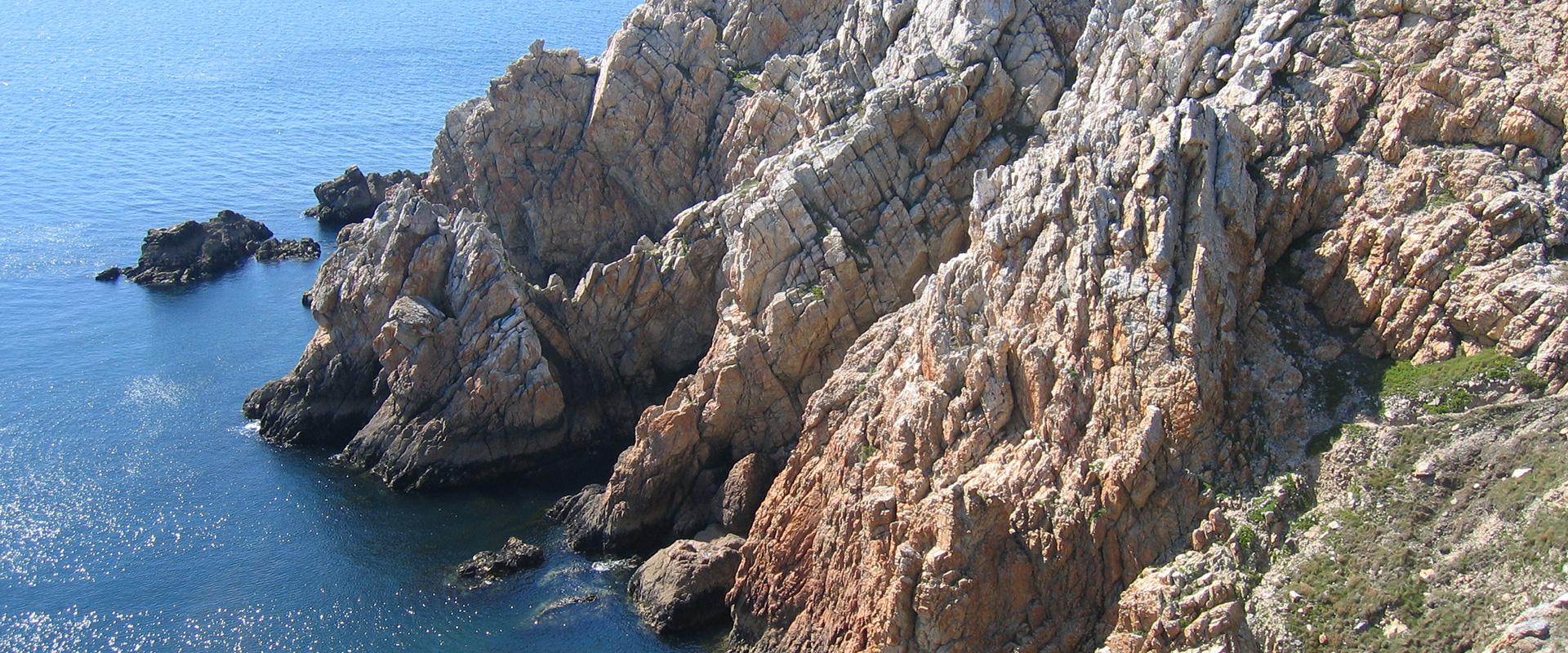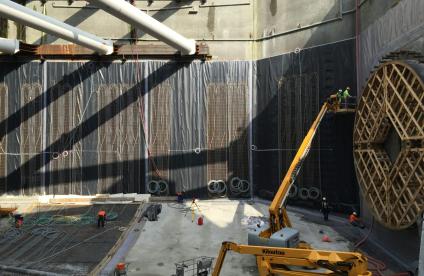The geologist Pierrick Graviou invites us to discover, with photos, 5 geological curiosities spread over Brittany. The complete articles can be found on the site The Conversation.
About the author
Pierrick Graviou has a doctorate in geology and has been working for several years on the national inventory of France’s geological heritage. He thus discovered and studied many remarkable geological sites, both in overseas France (Guadeloupe, Saint-Pierre and Miquelon, Reunion Island, Mayotte, Polynesia) and in metropolitan France. Author of some fifteen books on scientific mediation, he also gives talks and leads field trips.

The mystery of La Roche-aux-Fées
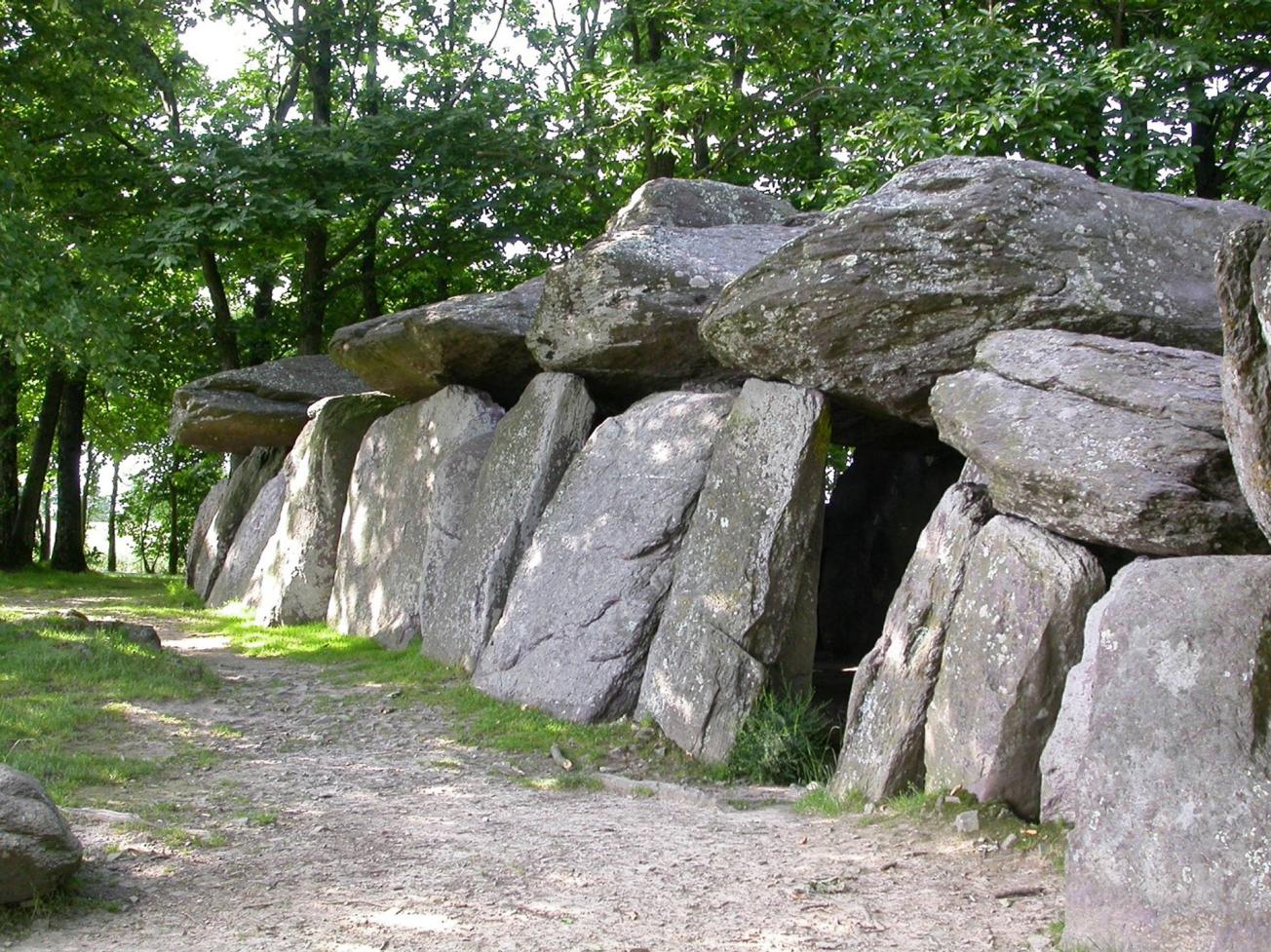
The Roche-aux-Fées covered walkway is the largest dolmen in France and one of the most beautiful megalithic monuments in Brittany.
© BRGM - Pierrick Graviou
However, what surprises the informed visitor above all are the rocks used to build the monument, which are very different from what can be found in the surrounding subsurface. While this subsurface is essentially formed of greenish-grey, brittle and relatively weak shale, the elements used to make the dolmen are of reddish sandstone, which is much more suitable for construction.
We must therefore face the facts: the gigantic blocks used at La Roche-aux-Fées were not quarried locally. They were transported from another location which, according to geological and archaeological studies, is about 5 kilometres further south, in the heart of the Theil Forest.

The bottle, the turtle and the elephant's foot
No need to look this up! It is not a reference to a fable by Jean de la Fontaine that you might not know, but simply refers to the names of several granite rocks found at various tourist sites in Brittany.
From the Pays Bigouden to Ploumanac'h (Côtes-d'Armor), via Huelgoat or Brignogan (Finistère), to take just a few examples, these often gigantic rocks are found all over the landscape, both inland and on the coast.
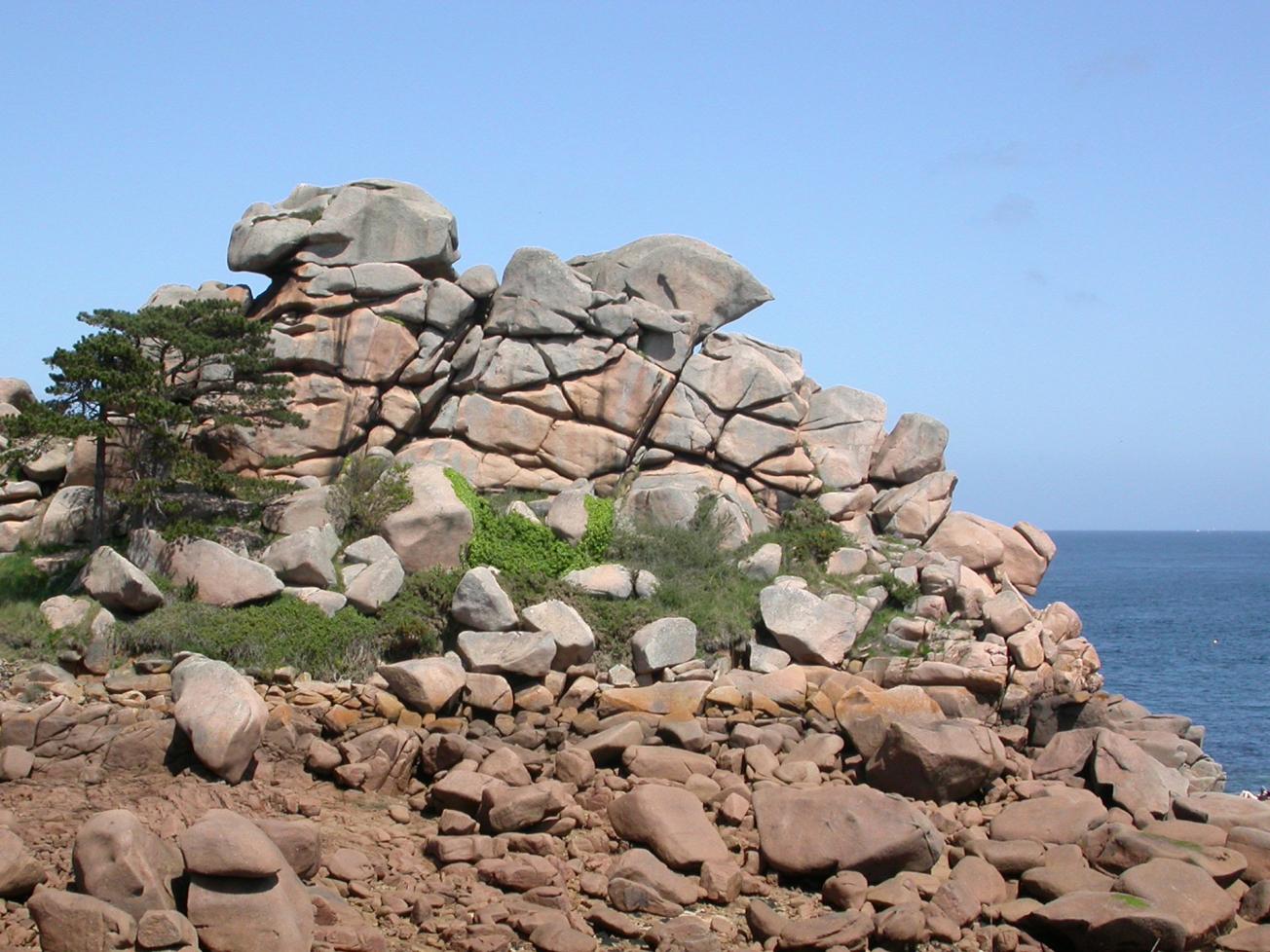
The granite boulder field of the Pointe du Château, in Ploumanac'h (Côtes-d'Armor).
© BRGM - Pierrick Graviou
They are the source of many legends and spark the imagination. But how were they formed?
Granite, from which these natural "sculptures" are made, is a rock of magmatic origin. Its slow crystallization, at a depth of a few kilometres, is followed by shrinking and the emergence of a network of cracks, called rock joints.

A space-time journey
One day in August 2020, in Lannion Bay, holidaymakers were taking advantage of the low tide to dig up some clams or hunt down any shrimp that might have been trapped in the tidal pools..
As they indulged in their favourite hobby, they almost certainly had no idea that they were on an outcrop of the oldest rocks in France.
These rocks are quite exceptional and only found in this part of Brittany and in Normandy, near Cap de la Hague, at the northern end of the Cotentin.
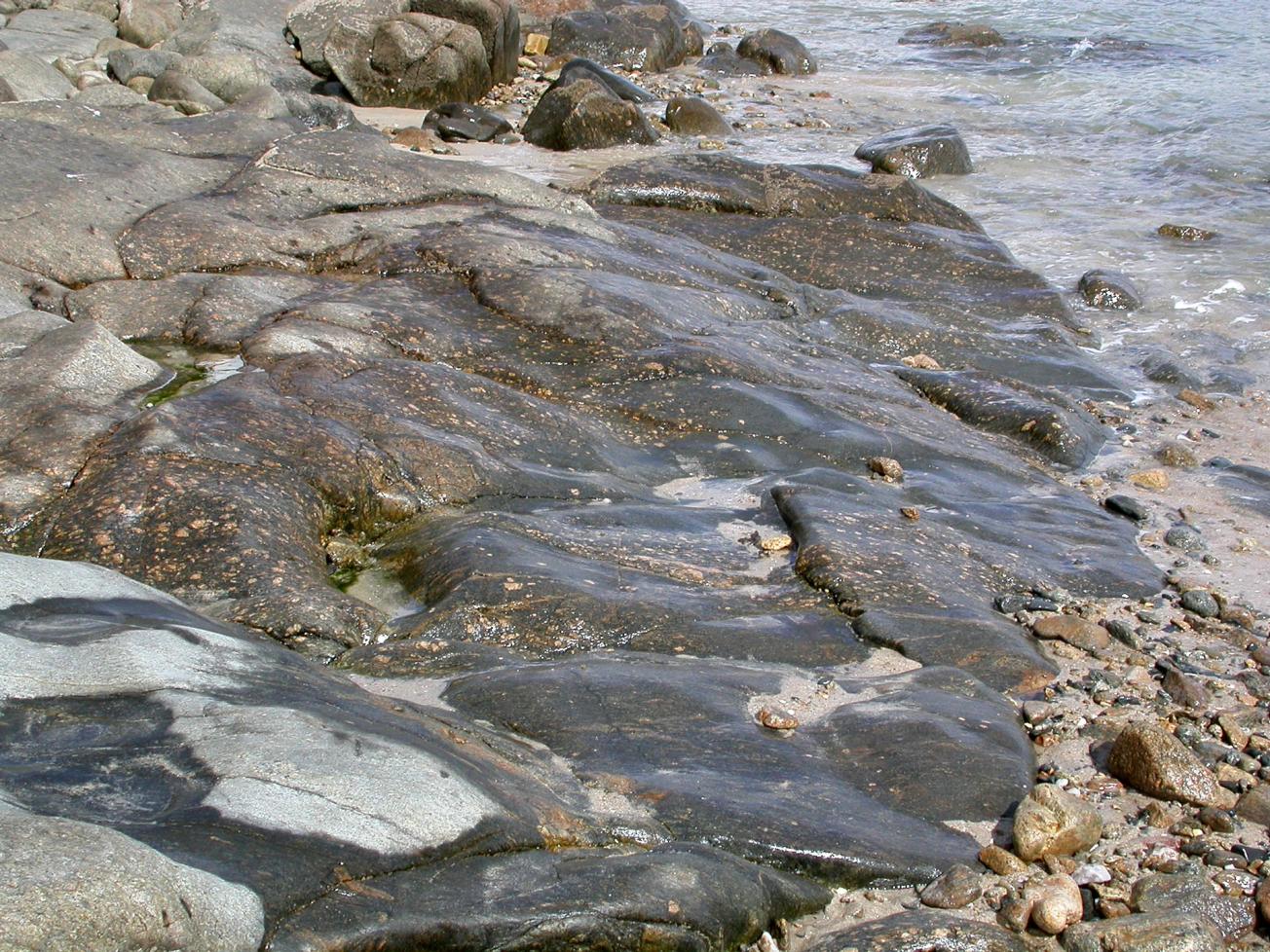
The oldest rocks in France (two billion years old) exposed on the Pors-Raden shore (Trébeurden, Côtes-d'Armor).
© BRGM - Pierrick Graviou
Here, in the Trégor, they can be seen at Locquirec (Finistère), on the beach of the Moulin de la Rive, or at Trébeurden (Côtes-d'Armor), on the small shore of Pors-Raden.
In both Brittany and Normandy, the results of the chemical analyses are indisputable: these are rocks that crystallized from granitic magma in the Earth's crust at a depth of several kilometres... about two billion years ago, nearly half the age of the Earth! Much further back in time than trips offered by the time machines in science fiction novels.

Kersantite: a stone blessed by the gods
While megalithic monuments, such as menhirs and dolmens, are emblematic of Brittany, the Calvaries are not to be outdone with a very large number of them scattered around Brittany.
One can run into them on an inland country walk, most often marked with a cross or, more rarely, with a relatively imposing structure, as in Pleyben or Plougastel-Daoulas (Finistère). They are not mere religious monuments, but true works of art, admirably and finely sculpted, representing scenes from the life of Christ.
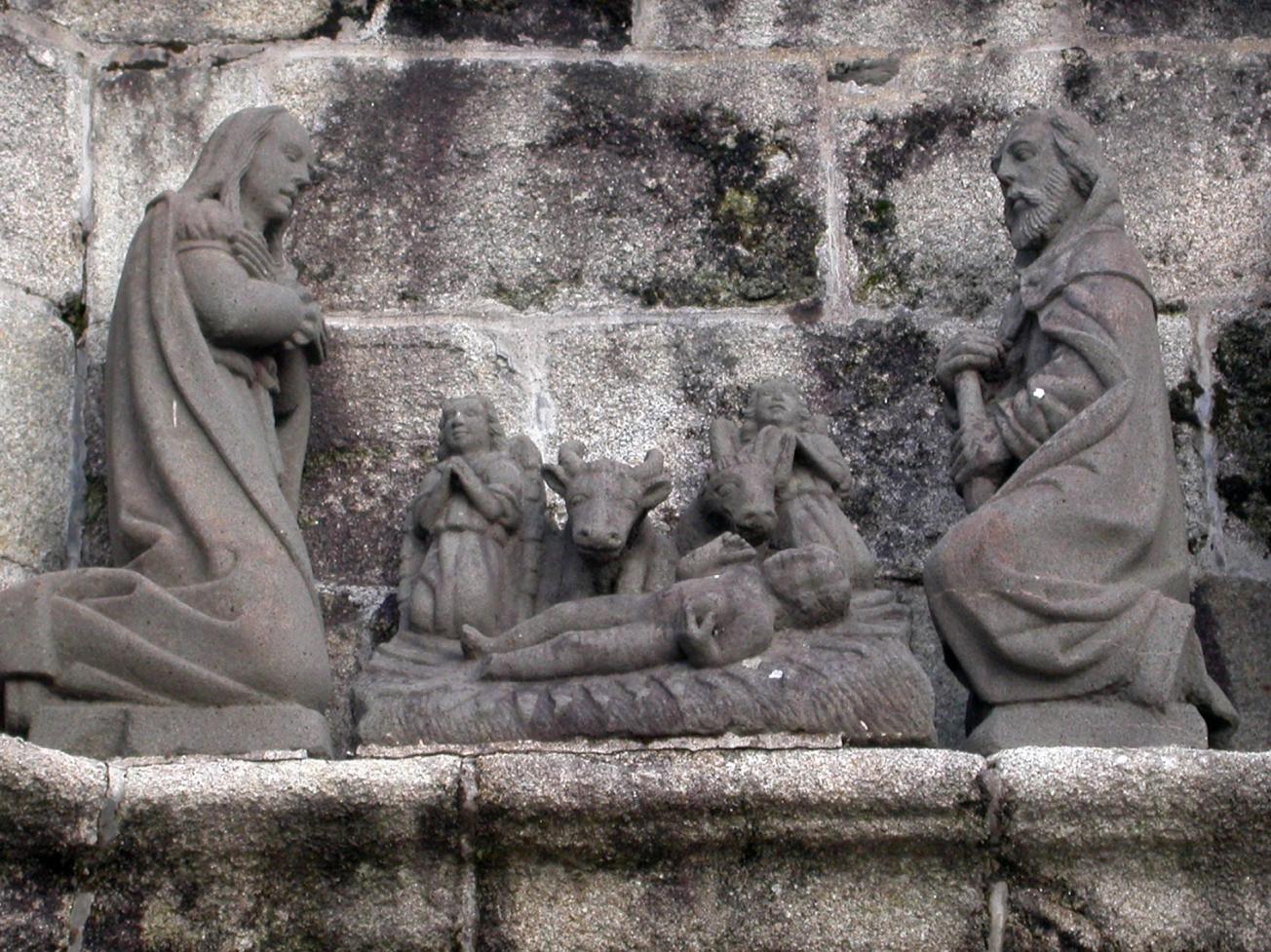
A scene from the Calvary of Pleyben (Finistère) made of kersantite and representing the nativity.
© BRGM - Pierrick Graviou
This one is made of kersantite: a dark rock which owes its name to the hamlet of Kersanton, located at the end of the Brest harbour, in the commune of Loperhet. It was here, about 280 million years ago, that this unusual rock was formed by crystallizing magma that was injected into older sedimentary rocks, forming veins.

The Monts d'Arrée: mountains from another epoch
Culminating at an elevation of nearly 400 metres in the municipalities of Commana and Plounéour-Menez (Finistère), the Monts d'Arrée form one of the most singular and emblematic landscapes of inland Brittany. The gorse and heather moor is omnipresent, leaving only a few rocky crags scattered here and there, defending the ridges, often swept by the winds or shrouded in fog.
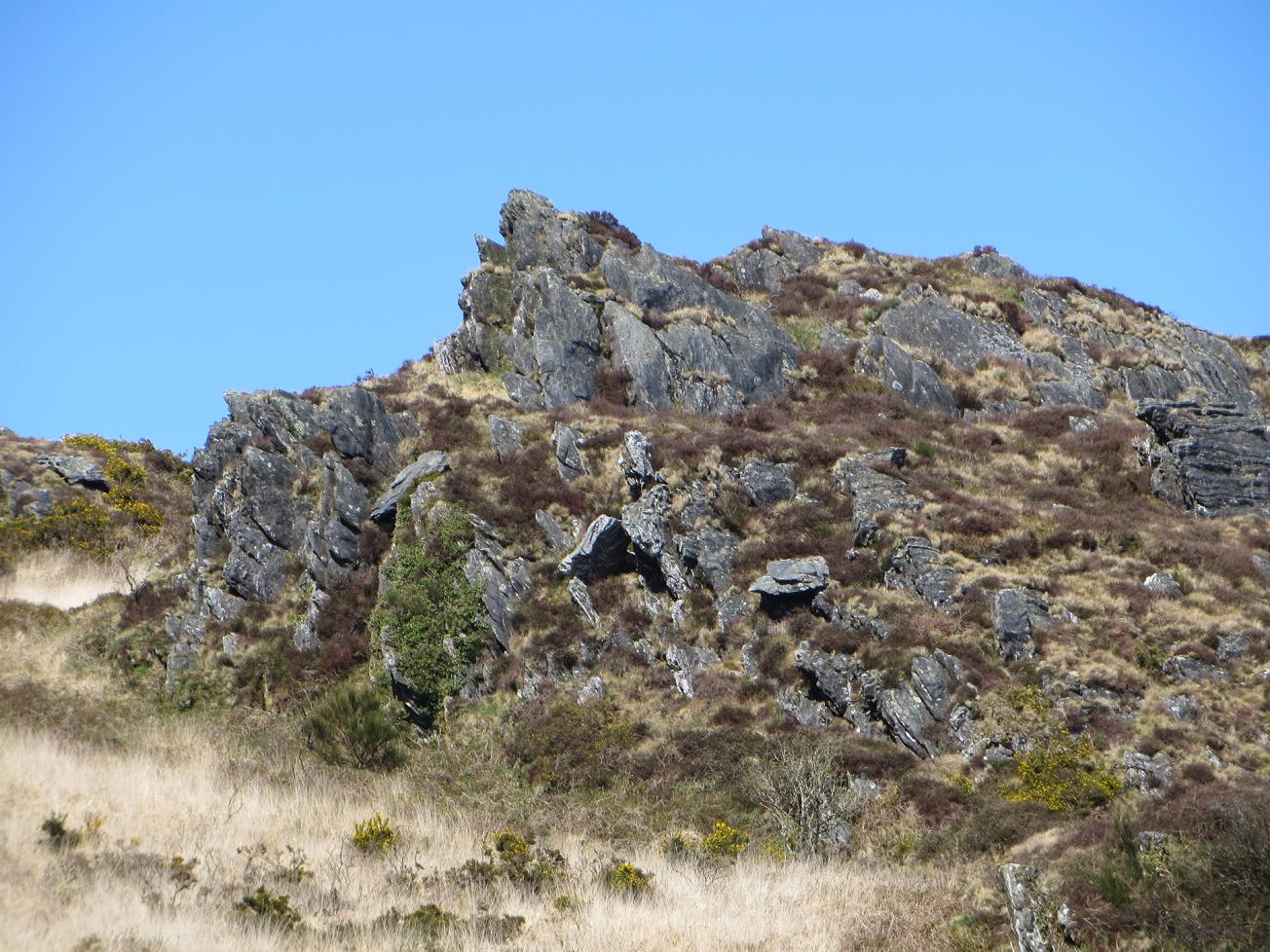
Shale and quartzite torn apart by erosion form the highest peaks of the Monts d'Arrée.
© BRGM – Pierrick Graviou
The relief is therefore very modest, which does not prevent the locals from considering themselves to be mountain folk. They are not entirely wrong if we refer to the geological history of these wilderness areas from another epoch. It was about 420 million years ago.
At that time, Armorica was still an insular belt, separated from a gigantic continent – Gondwana – by an ocean on whose shores sediments were deposited. These clays and fine sands were gradually compacted and buried under their own weight to become shale and quartzite.

